
Puente de San Martín: A Historical Gem in Toledo, Spain
Discover the Puente de San Martín in Toledo, Spain: a medieval bridge offering panoramic views, rich cultural heritage, and a serene natural retreat.
Nestled in the heart of Toledo, the Puente de San Martín is a breathtaking medieval bridge that spans the Tagus River. Built in the late 14th century, this architectural marvel offers a splendid view of Toledo's old town and its iconic skyline. The bridge, with its five impressive arches, is not only a testament to the engineering prowess of its time but also a picturesque spot that captures the essence of Toledo’s rich history. Strolling across the Puente de San Martín, visitors are treated to a panoramic vista of the surrounding landscape. The bridge leads to the ancient Jewish Quarter, which is filled with narrow, winding streets and charming stone buildings. This area is a treasure trove of cultural heritage, featuring landmarks like the Synagogue of El Tránsito and the Sephardic Museum. The blend of Christian, Jewish, and Muslim influences in the architecture and culture of the neighbourhood provides a unique and enriching experience. The Puente de San Martín also serves as an excellent starting point for exploring the natural beauty of the Tagus River. Visitors can enjoy a leisurely walk along the riverbanks, or even embark on a boat tour to see the bridge from a different perspective. The serene environment and lush greenery make it a perfect escape from the hustle and bustle of city life, offering a tranquil retreat for those looking to connect with nature.
Local tips in Puente de San Martín
- Visit early in the morning or late afternoon to avoid the crowds and enjoy the best lighting for photographs.
- Wear comfortable shoes, as the surrounding Jewish Quarter has cobblestone streets and steep inclines.
- Consider taking a guided tour to learn about the historical significance of the bridge and the surrounding area.
- Bring a picnic and enjoy it by the riverbanks for a relaxing break with a view.
- Check the local schedule for any festivals or events happening in the area during your visit.
Puente de San Martín: A Historical Gem in Toledo, Spain
Nestled in the heart of Toledo, the Puente de San Martín is a breathtaking medieval bridge that spans the Tagus River. Built in the late 14th century, this architectural marvel offers a splendid view of Toledo's old town and its iconic skyline. The bridge, with its five impressive arches, is not only a testament to the engineering prowess of its time but also a picturesque spot that captures the essence of Toledo’s rich history. Strolling across the Puente de San Martín, visitors are treated to a panoramic vista of the surrounding landscape. The bridge leads to the ancient Jewish Quarter, which is filled with narrow, winding streets and charming stone buildings. This area is a treasure trove of cultural heritage, featuring landmarks like the Synagogue of El Tránsito and the Sephardic Museum. The blend of Christian, Jewish, and Muslim influences in the architecture and culture of the neighbourhood provides a unique and enriching experience. The Puente de San Martín also serves as an excellent starting point for exploring the natural beauty of the Tagus River. Visitors can enjoy a leisurely walk along the riverbanks, or even embark on a boat tour to see the bridge from a different perspective. The serene environment and lush greenery make it a perfect escape from the hustle and bustle of city life, offering a tranquil retreat for those looking to connect with nature.
Iconic landmarks you can’t miss
Mirador del Valle
Discover stunning panoramic views of Toledo at Mirador del Valle, a must-visit vista point that showcases the city's rich history and breathtaking landscapes.

San Martin's Bridge
Explore the enchanting San Martin's Bridge in Toledo, a historic landmark offering breathtaking views and a glimpse into the city's rich past.
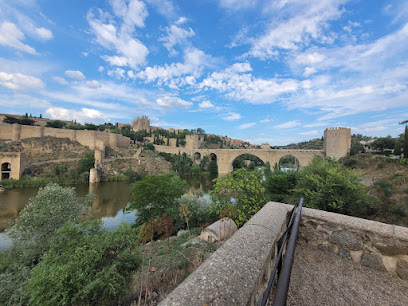
Alcantara Bridge
Discover the timeless beauty of Alcantara Bridge, a stunning Roman engineering marvel in Toledo, Spain, rich in history and breathtaking views.
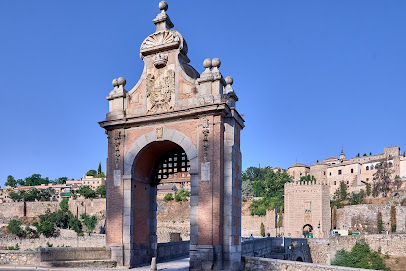
Puerta del Cambrón
Discover the historical charm of Puerta del Cambrón, a stunning gateway to Toledo's rich cultural heritage.
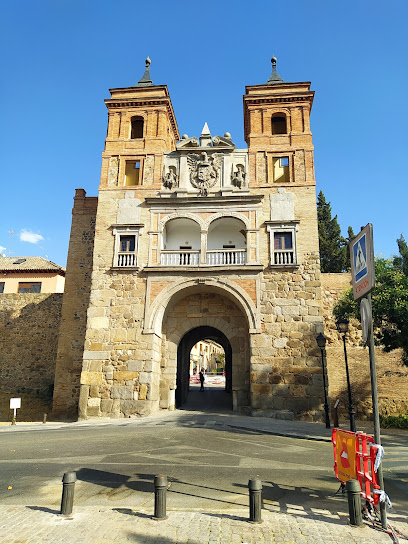
Mirador del puente San Martín
Discover stunning views of Toledo from the Mirador del Puente San Martín, the ultimate observation deck for unforgettable sights and serene moments.
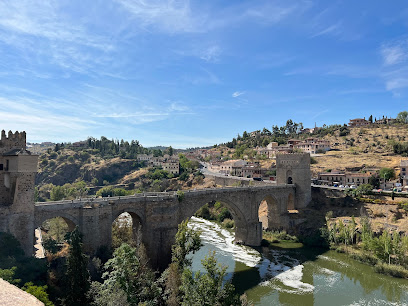
Torreón de los Baños de La Cava
Discover the historical Torreón de los Baños de La Cava in Toledo, Spain, a captivating landmark revealing the city's rich medieval heritage.
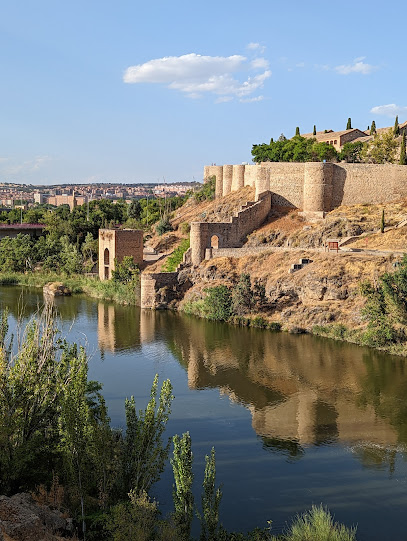
Mirador del puente de San Martin II
Discover the breathtaking views of Toledo's historic skyline from the Mirador del Puente de San Martin II, a must-visit landmark for every traveler.
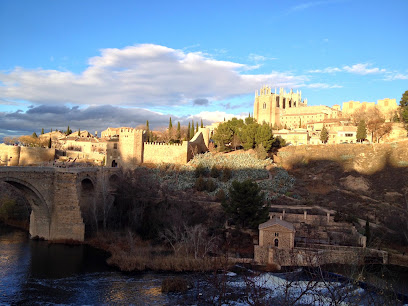
Unmissable attractions to see
Mirador del Valle
Discover the breathtaking views of Toledo at Mirador del Valle, a must-visit vista point that offers stunning panoramas and a serene atmosphere.

FLY TOLEDO
Experience thrilling adventure sports and stunning vistas at FLY TOLEDO, a top tourist attraction in the enchanting city of Toledo, Spain.
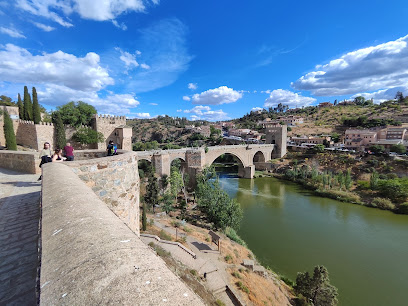
Tres Aguas, Cristina Iglesias
Experience the harmony of art and nature at Tres Aguas, a captivating installation by Cristina Iglesias in Toledo, Spain.
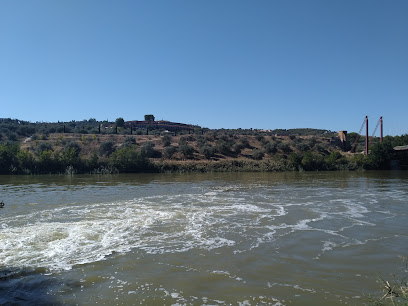
Panorámicas de Toledo
Discover the stunning panoramic views of Toledo, a captivating blend of history and beauty at Panorámicas de Toledo.
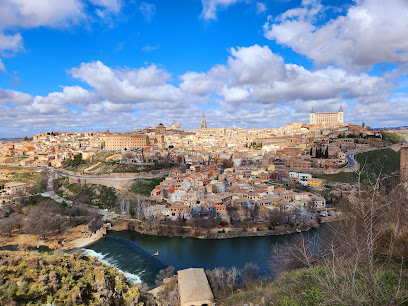
Monumento a Fray Luis de León
Discover the Monumento a Fray Luis de León, an inspiring tribute to one of Spain's literary giants in the heart of historic Toledo.
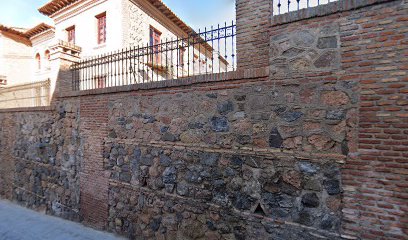
Cartel de Toledo
Discover the historical essence of Toledo at Cartel de Toledo, a captivating tourist attraction steeped in cultural significance and architectural beauty.
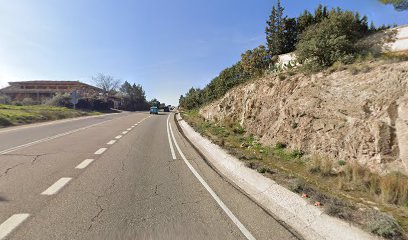
Essential places to dine
El Trébol
Experience authentic Spanish tapas and local brews at El Trébol, Toledo's beloved tapas bar offering vibrant flavors and a lively atmosphere.
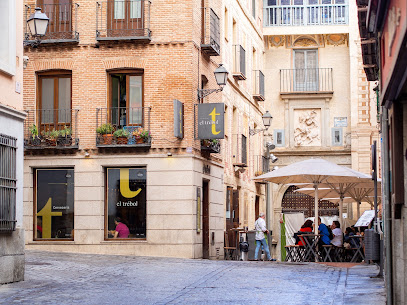
Parador de Toledo
Discover culinary delights and breathtaking views at Parador de Toledo, where history meets luxury in Spain's enchanting city.

Restaurante Venta de Aires
Experience the essence of Toledo through exquisite cuisine at Restaurante Venta de Aires - where tradition meets modern dining.
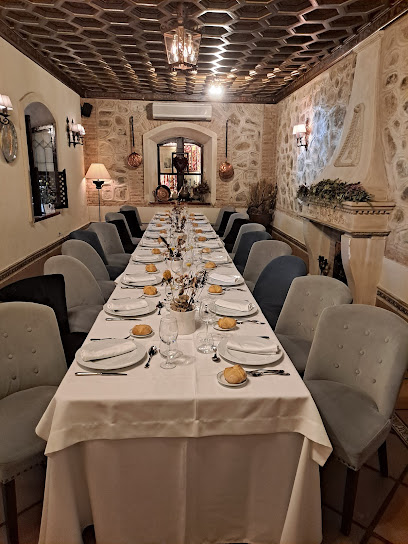
Restaurante Alfileritos 24
Experience authentic Spanish cuisine at Restaurante Alfileritos 24 in Toledo – where tradition meets modern flavors.

La Malquerida de la Trinidad
Discover La Malquerida de la Trinidad: A delightful blend of grilled delicacies and signature cocktails in Toledo's vibrant dining scene.
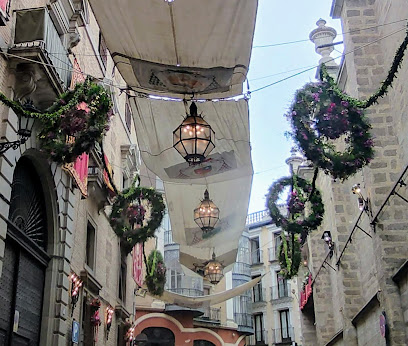
Restaurante Museo de Productos de Castilla-La Mancha
Discover authentic Spanish cuisine at Restaurante Museo de Productos de Castilla-La Mancha in Toledo - where tradition meets taste!
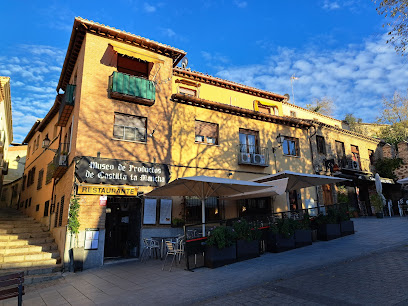
Restaurante Hierbabuena
Experience exquisite Spanish cuisine at Restaurante Hierbabuena in Toledo - where tradition meets modern culinary artistry.
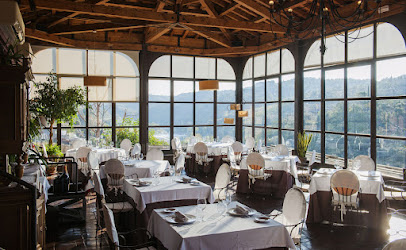
Restaurante La Fábrica de Harinas
Experience authentic Mediterranean cuisine in a charming atmosphere at Restaurante La Fábrica de Harinas in Toledo.
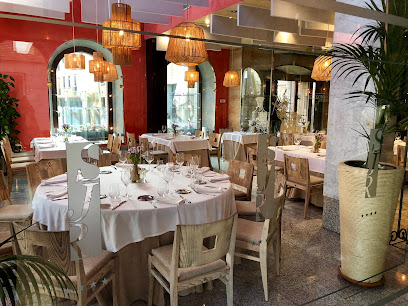
Restaurante El Horno de Miguel
Discover the flavors of Spain at Restaurante El Horno de Miguel in Toledo - where tradition meets taste in every dish.

Restaurante Venta de San Martín
Experience authentic Spanish cuisine at Restaurante Venta de San Martín in Toledo—delicious dishes served in a warm and inviting atmosphere.
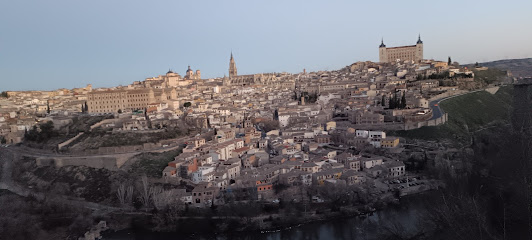
Markets, malls and hidden boutiques
Artesanías P. Maldonado C.B . Espadasyartedetoledo.com
Explore Toledo's rich artisan culture with unique crafts, collectibles, and traditional knives at Artesanías P. Maldonado.
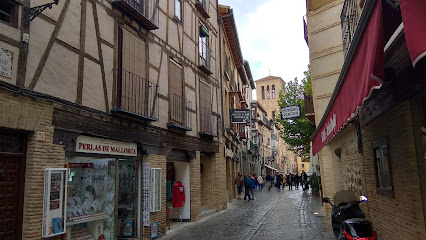
Abracadabra, Tienda de Minerales y Plata.
Explore Abracadabra in Toledo, a captivating gift shop filled with stunning minerals, gemstones, and exquisite silver jewelry, perfect for unique souvenirs.

The art of Toledo
Explore unique gifts and local artistry at The Art of Toledo, a charming gift shop in the heart of Toledo, Spain.
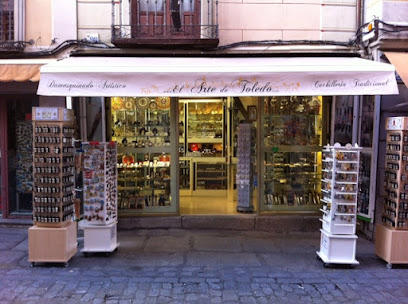
Artesania Toledana
Explore Artesania Toledana in Toledo - a treasure trove of handcrafted gifts and authentic souvenirs reflecting the city's rich cultural heritage.
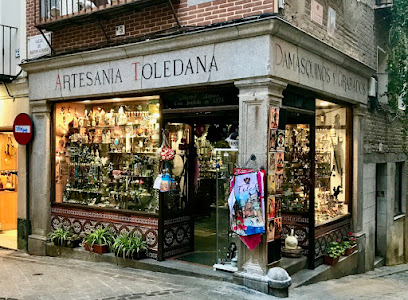
Damasquinado De Toledo Espadería Y Cuchillería
Explore the exquisite craftsmanship of Damasquinado De Toledo, where tradition and artistry converge in stunning gift items reflecting Toledo's rich culture.
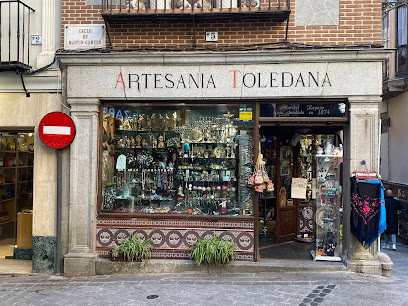
Acero Damasco
Explore Acero Damasco, Toledo's premier souvenir store for authentic artisan crafts and exquisite Damasco steel items that capture the city's rich heritage.
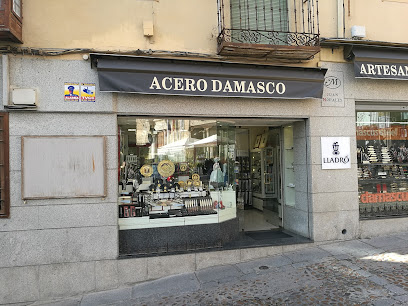
Yaveo
Discover the charm of Toledo at Yaveo, your go-to gift shop for unique souvenirs and local handicrafts that capture the spirit of this historic city.
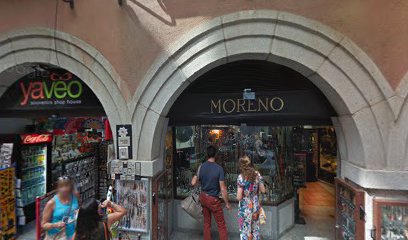
Valentina Payo Camacho
Explore Valentina Payo Camacho in Toledo for unique souvenirs and local crafts that embody the city's rich history and culture.
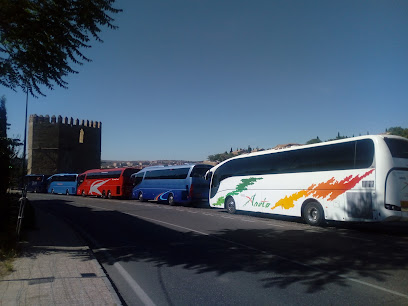
Ola y Óle
Discover unique gifts and local crafts at Ola y Óle, a charming gift shop in the heart of historic Toledo, Spain.

Artesanía Medina - Hombre de Palo
Explore the rich artisan heritage of Toledo at Artesanía Medina - Hombre de Palo, your go-to gift shop for unique handcrafted treasures.
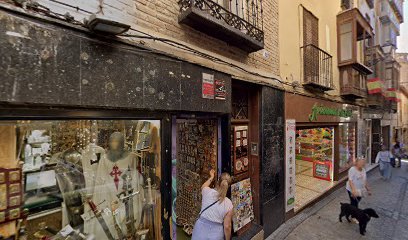
Essential bars & hidden hideouts
Bar Venta Del Alma
Experience authentic Spanish hospitality at Bar Venta Del Alma, a cozy Toledo bar serving local wines and delectable tapas in a vibrant atmosphere.
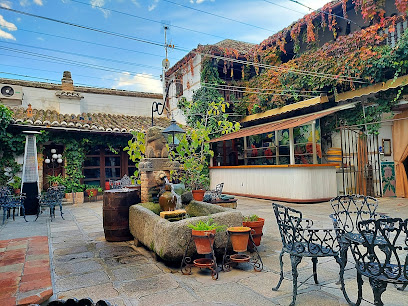
Botanic Bar Legendario
Experience the vibrant atmosphere and culinary delights at Botanic Bar Legendario in Toledo, Spain, where local flavors meet modern dining.
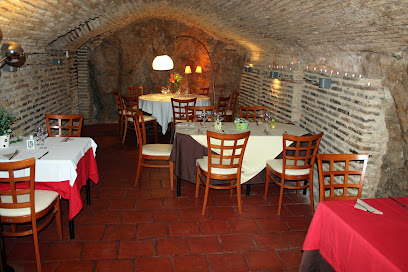
Bar Margot
Discover the authentic flavors of Toledo at Bar Margot, where delightful tapas and a lively atmosphere await every visitor.
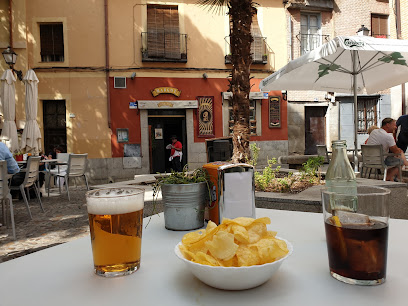
Pub O'Briens
Discover the vibrant atmosphere of Pub O'Briens, Toledo's top Irish pub, offering delicious drinks and a lively ambiance perfect for tourists.
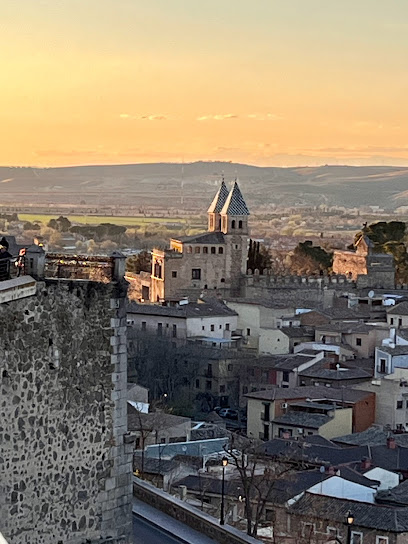
Taberna De Livingstone
Discover the vibrant atmosphere and unique cocktails at Taberna De Livingstone, a must-visit bar tabac in the heart of Toledo, Spain.
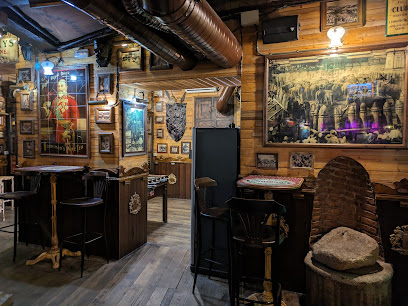
Bar El Puente
Discover the authentic flavors of Toledo at Bar El Puente, a cozy bar renowned for its delightful tapas and local wines.
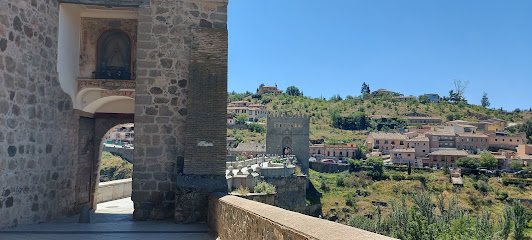
Bar La Boveda
Experience authentic Spanish cuisine and vibrant atmosphere at Bar La Boveda, Toledo's charming bar for tapas and local drinks.
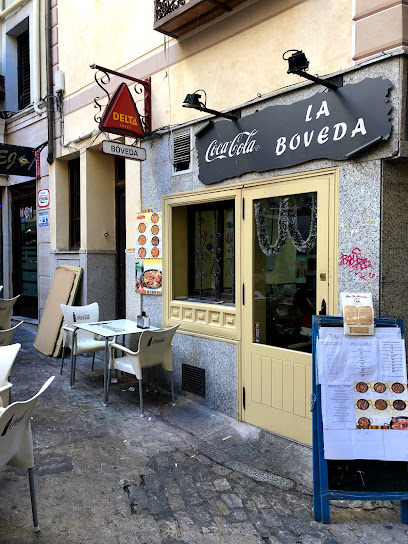
Bar La Divergente
Discover the vibrant flavors of Toledo at Bar La Divergente, where local agricultural products meet a lively bar atmosphere.
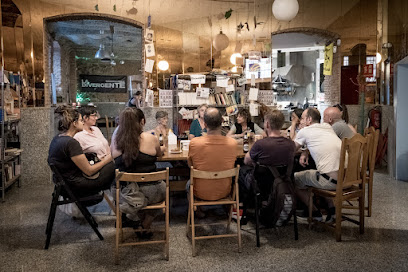
Imperium Toledo
Discover the lively cocktail and sports bar atmosphere at Imperium Toledo, where great drinks and good times await in the heart of Toledo.
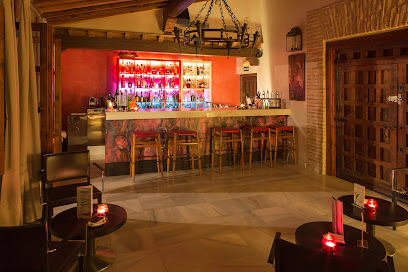
Restaurante Venta de San Martín
Experience authentic Spanish cuisine at Restaurante Venta de San Martín in Toledo, where every dish tells a story of tradition and flavor.

Local Phrases
-
- HelloHola
[oh-lah] - GoodbyeAdiós
[ah-dyohs] - YesSí
[see] - NoNo
[noh] - Please/You're welcomePor favor/De nada
[por fah-vor/de nah-dah] - Thank youGracias
[grah-thyahs] - Excuse me/SorryPerdón/Lo siento
[pehr-dohn/loh syehn-toh] - How are you?¿Cómo estás?
[koh-moh ehs-tahs] - Fine. And you?Bien. ¿Y tú?
[byehn. ee too] - Do you speak English?¿Hablas inglés?
[ah-blahs een-glehs] - I don't understandNo entiendo
[noh ehn-tyehn-doh]
- HelloHola
-
- I'd like to see the menu, pleaseMe gustaría ver el menú, por favor
[meh goo-stah-ree-ah behr ehl meh-noo, por fah-vor] - I don't eat meatNo como carne
[noh koh-moh kahr-neh] - Cheers!¡Salud!
[sah-lood] - I would like to pay, pleaseMe gustaría pagar, por favor
[meh goo-stah-ree-ah pah-gahr, por fah-vor]
- I'd like to see the menu, pleaseMe gustaría ver el menú, por favor
-
- Help!¡Ayuda!
[ah-yoo-dah] - Go away!¡Vete!
[veh-teh] - Call the Police!¡Llama a la policía!
[yah-mah ah lah poh-lee-see-ah] - Call a doctor!¡Llama a un médico!
[yah-mah ah oon meh-dee-koh] - I'm lostEstoy perdido/a
[ehs-toy pehr-dee-doh/dah] - I'm illEstoy enfermo/a
[ehs-toy ehn-fehr-moh/dah]
- Help!¡Ayuda!
-
- I'd like to buy...Me gustaría comprar...
[meh goo-stah-ree-ah kohm-prahr] - I'm just lookingSolo estoy mirando
[soh-loh ehs-toy meer-ahn-doh] - How much is it?¿Cuánto cuesta?
[kwan-toh kwehs-tah] - That's too expensiveEs demasiado caro
[ehs deh-mah-syah-doh kah-roh] - Can you lower the price?¿Puedes rebajar el precio?
[pweh-dehs reh-bah-hahr ehl pree-thyo]
- I'd like to buy...Me gustaría comprar...
-
- What time is it?¿Qué hora es?
[keh oh-rah ehs] - It's one o'clockEs la una en punto
[ehs lah oo-nah ehn poon-toh] - Half past (10)Y media (las diez)
[ee meh-dyah (lahs dyehth)] - MorningMañana
[mah-nyah-nah] - AfternoonTarde
[tahr-deh] - EveningNoche
[noh-cheh] - YesterdayAyer
[ah-yehr] - TodayHoy
[oy] - TomorrowMañana
[mah-nyah-nah] - 1Uno
[oo-noh] - 2Dos
[dohs] - 3Tres
[trehs] - 4Cuatro
[kwah-troh] - 5Cinco
[theen-koh] - 6Seis
[sehs] - 7Siete
[syeh-teh] - 8Ocho
[oh-choh] - 9Nueve
[nweh-veh] - 10Diez
[dyehth]
- What time is it?¿Qué hora es?
-
- Where's a/the...?¿Dónde está...?
[dohn-deh ehs-tah] - What's the address?¿Cuál es la dirección?
[kwal ehs lah dee-rehk-syon] - Can you show me (on the map)?¿Puedes mostrarme (en el mapa)?
[pweh-dehs mohs-trahr-meh (ehn ehl mah-pah)] - When's the next (bus)?¿Cuándo es el próximo (autobús)?
[kwan-doh ehs ehl proh-ksee-moh (ow-toh-boos)] - A ticket (to ....)Un billete (a ...)
[oon bee-yeh-teh (ah ...)]
- Where's a/the...?¿Dónde está...?
History of Puente de San Martín
-
The Puente de San Martín, a remarkable medieval bridge, was constructed in the 14th century to connect the old city of Toledo with the growing settlements on the opposite bank of the Tagus River. The bridge, named after Saint Martin, showcases stunning Gothic architecture and originally featured 10 arches, although only five remain today. Its construction was part of a broader effort to enhance trade and communication in the region, reflecting Toledo's importance as a commercial and cultural hub during the Middle Ages.
-
Throughout its history, the Puente de San Martín has served as a crucial military asset. During the Reconquista, the bridge was vital for the movement of troops and supplies as Christian forces sought to reclaim Toledo from Muslim rule. Its strategic location made it a focal point during various skirmishes and battles, particularly in the late 11th and early 12th centuries, when the city was a key player in the Iberian Peninsula's shifting power dynamics.
-
The siege of Toledo in 1085 was a significant event that highlighted the importance of the Puente de San Martín. The Christian forces, led by King Alfonso VI of León and Castile, used the bridge to reinforce their positions and facilitate the entry of troops into the city. The successful capture of Toledo marked a turning point in the Reconquista, establishing the city as a center of Christian culture and governance in the region.
-
The Puente de San Martín has not only served practical purposes but has also inspired artists and writers throughout history. Its picturesque setting and striking architecture have made it a favorite subject for painters, including the famous Spanish artist El Greco, who captured the essence of Toledo's landscape. The bridge continues to be a symbol of the city’s rich cultural heritage and artistic legacy.
-
In the 20th century, the Puente de San Martín underwent significant restoration efforts to preserve its structure and historical integrity. Today, it stands as a testament to Toledo's medieval past and is a popular destination for both tourists and locals. The bridge not only serves as a vital connection between neighborhoods but also hosts cultural events and celebrations, reinforcing its role as a central part of Toledo's community life.
Puente de San Martín Essentials
-
Puente de San Martín is easily accessible from various neighborhoods in Toledo. If you are arriving from the city center, you can take a leisurely 20-minute walk across the picturesque streets of Toledo. Alternatively, public buses, such as Line 5, connect the area to central points, running frequently throughout the day. If you're coming from the Toledo train station, taxis are readily available and will take approximately 10-15 minutes to reach Puente de San Martín.
-
Puente de San Martín is a compact neighborhood, making it easy to explore on foot. Bicycles are also a popular way to navigate the area, with several rental shops nearby. Public transportation options include buses that operate within Toledo, but many of the neighborhood's key attractions are within walking distance. Taxis are available for longer journeys or for those preferring not to walk.
-
Puente de San Martín is generally a safe area for tourists. However, it is advisable to exercise caution, especially at night or in less populated areas. While there are no specific high-crime zones targeting tourists, petty theft can occur in crowded places. Keep an eye on your belongings and avoid displaying valuables openly.
-
In case of an emergency, dial 112 for police, fire, or medical assistance. Emergency services are responsive and available throughout Toledo. It is also advisable to have travel insurance. For medical issues, local pharmacies can provide assistance, and there are hospitals in the city center if more serious attention is needed.
-
Fashion: Do dress modestly, especially when visiting religious sites. Avoid wearing overly casual or revealing clothing. Religion: Do respect local customs, particularly in churches. Cover your shoulders and knees when entering. Public Transport: Do be courteous; offer your seat to the elderly. Don’t eat or drink on public transport. Greetings: Do greet locals with a handshake; it’s polite. Eating & Drinking: Do enjoy local tapas and drinks; don’t refuse food offered to you, as it’s considered rude.
-
To experience Puente de San Martín like a local, take time to explore the local markets for fresh produce and regional delicacies. Engage with the friendly locals, who are often willing to share stories about the neighborhood's rich history. Visit the iconic San Martín Bridge at sunset for stunning views of the Tagus River. Don't miss the annual local festivals, where you can immerse yourself in traditional music, dance, and cuisine.
Nearby Cities to Puente de San Martín
-
Things To Do in Madrid
-
Things To Do in Avila
-
Things To Do in Segovia
-
Things To Do in Salamanca
-
Things To Do in Valladolid
-
Things To Do in Teruel
-
Things To Do in Badajoz
-
Things To Do in Burgos
-
Things To Do in Bragança
-
Things To Do in Valencia
-
Things To Do in Seville
-
Things To Do in Murcia
-
Things To Do in Zaragoza
-
Things To Do in Lamego
-
Things To Do in Alicante








